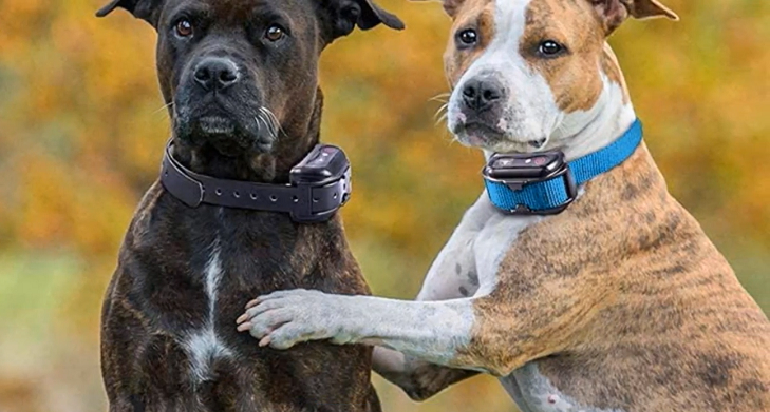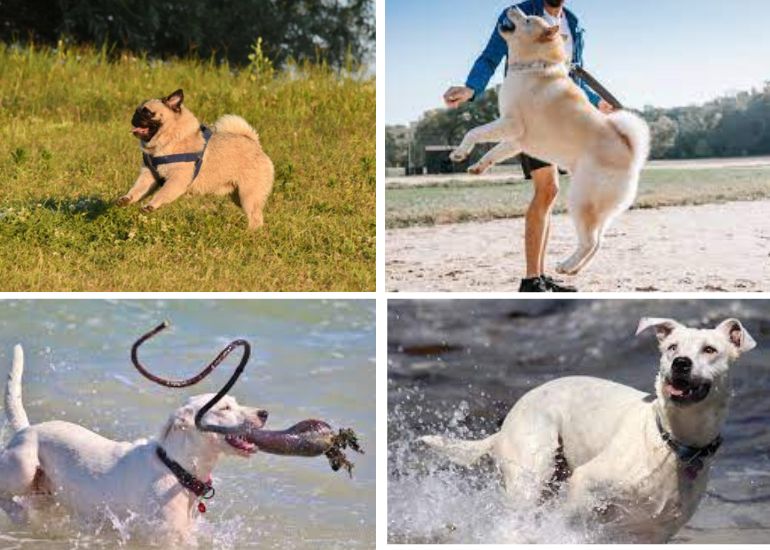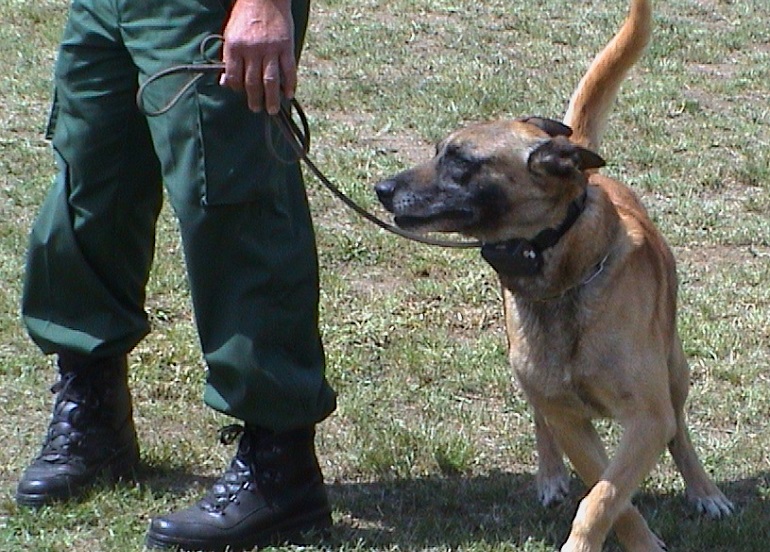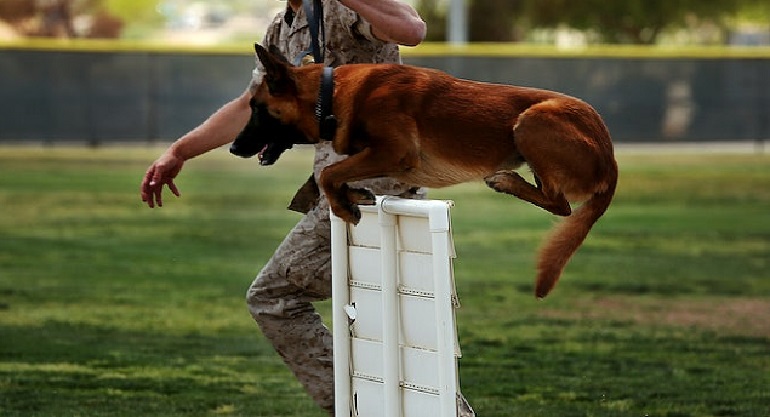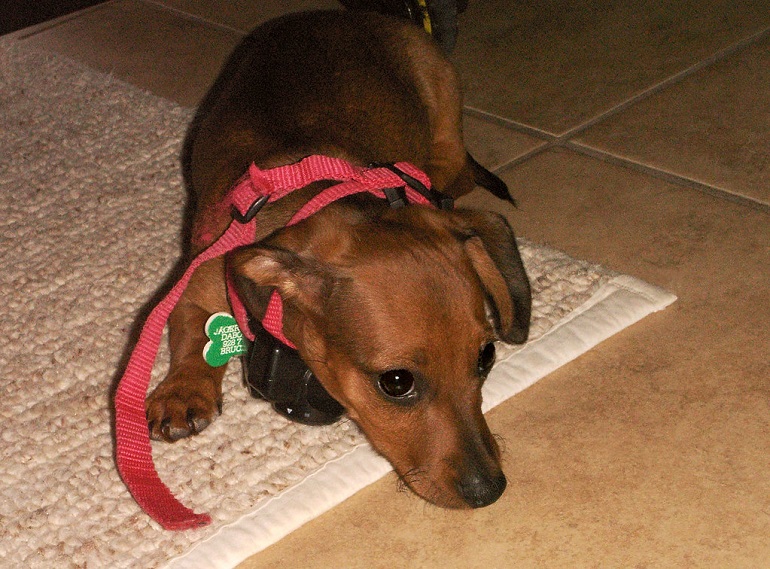Training a dog can be both a rewarding and challenging experience, demanding patience, consistency, and understanding. For some pet owners, shock collars—devices that deliver a mild electric pulse to the dog’s neck—offer a solution for managing behavioral issues and reinforcing commands. This guide aims to provide a complete overview of how to effectively and humanely use a shock collar, ensuring the safety and well-being of your furry friend. By outlining crucial steps, potential risks, and ethical considerations, this guide empowers pet owners to make informed decisions and foster a harmonious relationship with their canine companions.
Let’s face it: we adore our dogs. They’re fluffy balls of love and we can’t imagine our lives without them… But they’re not exactly angels all the time, are they?
Take mine, for example. I love her to bits and remain convinced that she’s the cutest cockapoo around – but she barks a lot (especially now, since I’m writing this and not playing with her). And when she isn’t barking, she’s ferreting through the trash or ripping the soles out of my shoes.
In the comfort of your own home, it can be irritating but not too bad. But what about when your fur-babies misbehave in public? At best, it’s embarrassing. At worst, you look like an irresponsible owner.
Extra dog training is an option, but it’s not always the easiest or most effective solution. Fortunately, there is a range of tools available to help. One of these is shock collars.
“But wait – aren’t shock collars supposed to be bad?” I hear you ask.
Shock collar, electronic collar, remote training collar – call it what you want, they all amount to the same thing. And some people have strong opinions about them.
But they’re not necessarily what you think. In fact, using a shock collar can actually be humane and effective – at least, when they’re in the right hands. That’s why it’s important to know how to train a dog with a shock collar.
Still, they’re controversial. While some argue they’re inhumane and harm dogs physically and mentally, others insist they are safe and effective dog training methods.
When they were first used to train hunting dogs back in the 1960s, they were indeed powerful and their strong shocks posed a risk to dogs. However, they’ve changed a lot since then and most modern shock collars aren’t as dangerous as they used to be.
Still, an electronic collar is by no means a substitution for basic training and must always be used with kindness. The good news is that, if you’re reading this, you likely want what’s best for your dog, so a lack of care shouldn’t be an issue for your pup!
How Does a Shock Collar Work?
Shock collars come in different colors and sizes, but are bulkier than regular collars to accommodate a small box and the radio-controlled electronic device. There are also a couple of probes that nestle against the dog’s skin that propel an electric shock when prompted. This can be set off manually with a remote control or automatically with a proximity sensor.
This shock (also known as a stimulus) is what people largely object to. However, these stimuli are designed to be harmless, even though the word ‘shock’ sounds harsh. Although the highest setting might pinch a bit too much, most levels of shock are comparable to a mild tickling while still being strong enough to seize a dog’s attention.
But what if you adamantly refuse to use a shock? The good news is you don’t have to!
Most shock collars come with alternate correction methods, such as sounds, vibrations, and scents. However, because dogs’ sense of smell is so much more sensitive than our own, the scent option might be less harmless than you’d think. Still, the intensity of shocks, sounds, vibrations and scents can all be adjusted.
How to Introduce a Shock Collar to a Dog
Using a shock collar can be an effective way to train your dog… but they’re not magic and require some preparation.
Shock Yourself First
Before you strap the new toy on your loving pup, try it on yourself first. After all, if a shock is too intense for you, imagine how it’ll be for your little fur-baby!
Master the Basics
Next, you should make sure your dog understands basic obedience commands; they should be able to ‘sit’, ‘lie down’, ‘stay’, and ‘come’ without too much difficulty. Try to make them familiar with clickers and voice markers too; for example, they need to know that ‘yes’ or ‘good boy’ means they’re successful and might get a treat.
These are crucial steps you need to take before you start using a shock collar. They’re not used for suppression – that could seriously affect your dog’s mental well-being and personality. Instead, they’re meant to be used to communicate; not to stop bad behavior, but to communicate effectively and encourage them to comply more.
Take it Slow
Taking it slow is key. Many wonder when is a dog old enough for a shock collar. While in theory, they can wear one from 10 weeks old, it’s recommended to wait until your dog is six-months-old at least.
When they first sport their new accessory, start the stimulus on a low setting to make sure it’s not painful. If they don’t feel it, ratchet it up bit by bit until they register it – they might suddenly change expression or do that adorable head cock.
But bear two things in mind:
- Larger dogs might need higher levels, but still start low
- Pay attention to their emotional sensitivity, since nervous ones might be more reactive.
Remember that it’ll take time… you need to be patient. After all, there’s suddenly a bulky, heavy shock collar around your dog’s neck with a couple of contact points prodding against them – they need to get used to it.
Whatever you do, don’t increase the intensity because they don’t obey. This will just be painful and frighten your dog. And instead of improving obedience, they might get worse. Besides, it’ll ruin that all-important bond between the two of you.
Make Them Like the Collar
Using a shock collar is actually pretty similar to basic positive reinforcement training and knowing they get a reward if they obey. When they feel a stimulus – either a shock, vibration, scent, or sound – they know that they need to obey immediately for a reward.
To get them started, you need to get them used to it – and actually like it! Try buzzing it once, giving a positivity marker (like ‘Yes!’), and give a reward. This is the best way to get them to associate the stimulus with a reward.
How to Properly Train a Dog with a Shock Collar
Getting your dog used to their new shock collar is one thing, but effective shock collar training is another challenge altogether. Take it one step at a time and pay attention to how your pup reacts.
1. Purchase a Quality Product
Having a decent shock collar makes things easier for you and more pleasant for your dog. A poor-quality product might be inconsistent in its shock intensity – or worse; it might malfunction and shock your pup randomly!
So get the best dog collar you can. We know that even a cheap shock collar can be fairly pricey, but there are still good-quality products at a range of prices that suit most budgets. So, do your research first!
In your research, don’t forget to explore the extensive Halo collar reviews and SpotOn fence reviews, which showcase the high-quality and reliable features of these two advanced collar systems.
These innovative products offer not only a robust, quality-assured mechanism to assure the safety of your canine companion but also provide insightful training modules and smart boundary-setting capabilities that seamlessly integrate into your training routines.
2. Start with the Basics
A shock collar won’t magically transform their behavior – it takes a bit of work. So, start easy and go over simple commands with them: come, lie down, sit, stay.
Remember positive reinforcement; use the same voice marker – like ‘Yes’ or ‘Good boy’ – and use their favorite treats. This is the best way to start; your dog will continue to trust you and be more open to using the shock collar – especially if it means they get treats!
3. Show Your Dog the Behavior You Want
Don’t just buzz your dog when they do something wrong or don’t obey. This won’t help them learn – it’ll just make them confused and upset. And we don’t want that!
Instead, only use the shock collar as a marker for when they do something correctly and get a treat.
4. Combine the Collar with Positive Reinforcement
If you want to use the shock collar to encourage your dog to stop problem behaviors, they need to learn to like the collar first. To do that, they need to associate the shock collar with rewards, similar to using a clicker. So, when they feel that buzz, they immediately pay attention to you and obey because they know a treat is on its way!
If you just use the shock collar to stop unwanted behavior, this is negative reinforcement… and it might have the opposite effect.
5. Use ‘vibrate Mode’ on the Collar
The shocks aren’t how they used to be on early shock collars (thank goodness!). Still, you might want to consider only using the vibrate or sound mode and forgo the shock or scent options altogether. This keeps your pooch happy and out of harm’s way. So do your pup a favor and get the best vibrating dog collar.
If you feel you might need the shock option to start with, you could always dial it back over time so eventually it’s just on vibrate.
6. Know When to Ask for Help
What if your dog just isn’t getting it? Whatever you do, don’t get frustrated, don’t get impatient, and don’t turn the correction level up. None of this will help the dog training, and it’ll just damage the relationship between you and your fur-baby!
If you’re just not seeing any success, it might be worth finding a professional trainer. Many professional dog trainers are skilled at getting the best out of dogs and usually have experience with these tools. If in doubt, a professional trainer will be able to tell you how to train a dog with a shock collar.
I can hear your complaints already – “But a professional dog trainer is expensive!” That’s true, but when your pup’s well-being is at risk, it’s worth it. Besides, they’ll give you some tips on how to continue you doing it yourself.
And let’s face it, if you can find the money for a decent shock collar, you can probably find a bit for a dog trainer too.
7. Know When to Quit
Remember: a shock collar is not designed for staying on all day. Imagine those contact points rubbing against your skin all day… Your dog will run the risk of developing sores if you’re not careful. It’s best to use them in short bursts when shock collar training, and then to take them off afterwards.
Another thing to keep in mind: every dog is unique. While using a shock collar might work a treat for some dogs, it doesn’t mean it’ll work for yours. If yours is particularly sensitive and isn’t enjoying the collar, it might be worth stopping.
What Else Can You Teach Your Dog Using a Shock Collar?
Although shock collars only really do one thing, they’re versatile tools that can be used in a variety of ways.
The obvious and most common use of a shock collar is to reinforce basic training and make responses slicker and sharper.
If you’re hoping your dog might learn more advanced and complicated skills down the line, this is an excellent way to master the basics before moving on to more challenging tricks.
They can also be used to help train off-leash walking. We’ve all seen the dogs and dog owners we aspire to be… You know, those cool ones who just let their dog off the leash, confident they won’t run off, or get lost, or annoy other dogs.
While shock collars won’t get you to that point immediately, they can be a useful stepping stone. Some people even see electronic collars as an alternative to a physical leash.
In fact, shock collars have some advantages over leads – especially in busy parks with lots of other dogs. How many times have you experienced leads getting tangled around other people? Shock collars put an end to that!
Invisible fences are a great use of shock collars, giving your dog the option to be free while still giving them a boundary – albeit one you can’t actually see.
When used as invisible fences, shock collars are connected to a wired boundary underground, a circular boundary from a radio transmitter, or even GPS.
If your dog strays outside the boundaries, they receive a short shock or vibration that tells them to stop and stay in its safe area.
Another key use of shock collars is to stop bad behaviors. We love dogs, but they can pick up some bad habits. Some snap or bark at others, some pull at the leash… mine loves to bark a lot.
If any of these problem behaviors start to get out of hand, shock collars can help communicate what’s not okay and remind them how to behave.
Shock collars can also help if you want your dog to be a bit of an athlete.
If you’ve ever seen a dog take on an agility course, you know it’s not just climbing and jumping over obstacles. There’s a time element involved, and these dogs need to be able to obey commands quickly and efficiently.
Shock collars are just one way of helping them respond to commands quickly and effectively to win extra medals!
Finally, shock collars are used by trainers to get dogs ready for a job!
We’ve all seen dogs who have more exciting jobs than our own; like bomb-sniffing dogs and those who work in the police or military. We don’t see the amount of training that goes into that, but many are trained using shock collars.
Final Thoughts
While for some they can be controversial, a shock collar is nevertheless a powerful training device, provided they’re used for the right reasons and done in the right way.
They help you communicate effectively with your dog, despite long distances and potentially noisy surroundings full of distractions. Shock collar training can grab your dog’s attention in a split second and have incredible results.
You just need to remember that positive reinforcement is the bedrock of all training methods, and a shock collar should never replace it.
Ultimately, your dog’s happiness and well-being are infinitely more important than how responsive it is to commands. Make sure that when using a shock collar, it only helps improve your bond with your dog – because, at the end of the day, that’s what matters most.
In conclusion, training a dog with a shock collar can be an effective method if utilized with care, understanding, and responsibility. It is crucial for dog owners to prioritize their pet’s well-being, ensuring that the collar is used as a complementary tool within a broader training regimen that includes positive reinforcement techniques. Consistent monitoring, gradual introduction, and consulting with professional trainers can enhance the training experience, leading to better communication and a stronger bond between the owner and their dog. Ultimately, patience and a focus on humane practices are essential to achieving desired behavioral outcomes.

